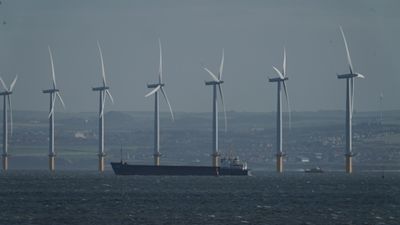Carbon captured from industry set to be stored deep under the rocks off Teesside coast

Captured carbon is set to be stored deep under rocks off the Teesside coast, as part of plans to remove 30 million tonnes of CO2 from our atmosphere by 2030.
An announcement by the North Sea Transition Authority revealed 13 areas of seabed around the UK's coastline as potential sites for permanently storing millions of tonnes of CO2.
It is hoped they will be among the first of many, with the UK needing up to 100 offshore sites to meet its target of 'net zero' by 2050 – meaning it produces no overall greenhouse gas emissions.
Carbon capture and storage involves collecting CO2 emissions from industry and piping them deep underground before they can be released into the atmosphere.
At the moment most CO2 is released into the atmosphere but this risks accelerating harmful processes such as global warming and ocean acidification.
The aim is to collect the CO2 before it gets into the air, and then transport it via ships or pipelines to be permanently stored deep underground.
Teesside is one of the areas offered for licensing because the North Sea coastline is made up of a mixture of depleted oil and gas fields and porous rock formations filled with salt water.
Will Webster, energy policy manager at Offshore Energies UK said: "Carbon capture technologies will be a key element in helping the UK reach net zero.
"It is particularly important for industry, especially heavy industries which need a lot of energy and so produce a lot of CO2.
"This applies particularly to the cement and steel industries, petrochemical refineries, and power generation.
“The UK’s oil and gas sector has a highly skilled workforce used to managing and transporting large volumes of gas safely and they will have all the knowledge needed to make this technology work."
The company aims to store 50 million tonnes of CO2 a year by 2035.